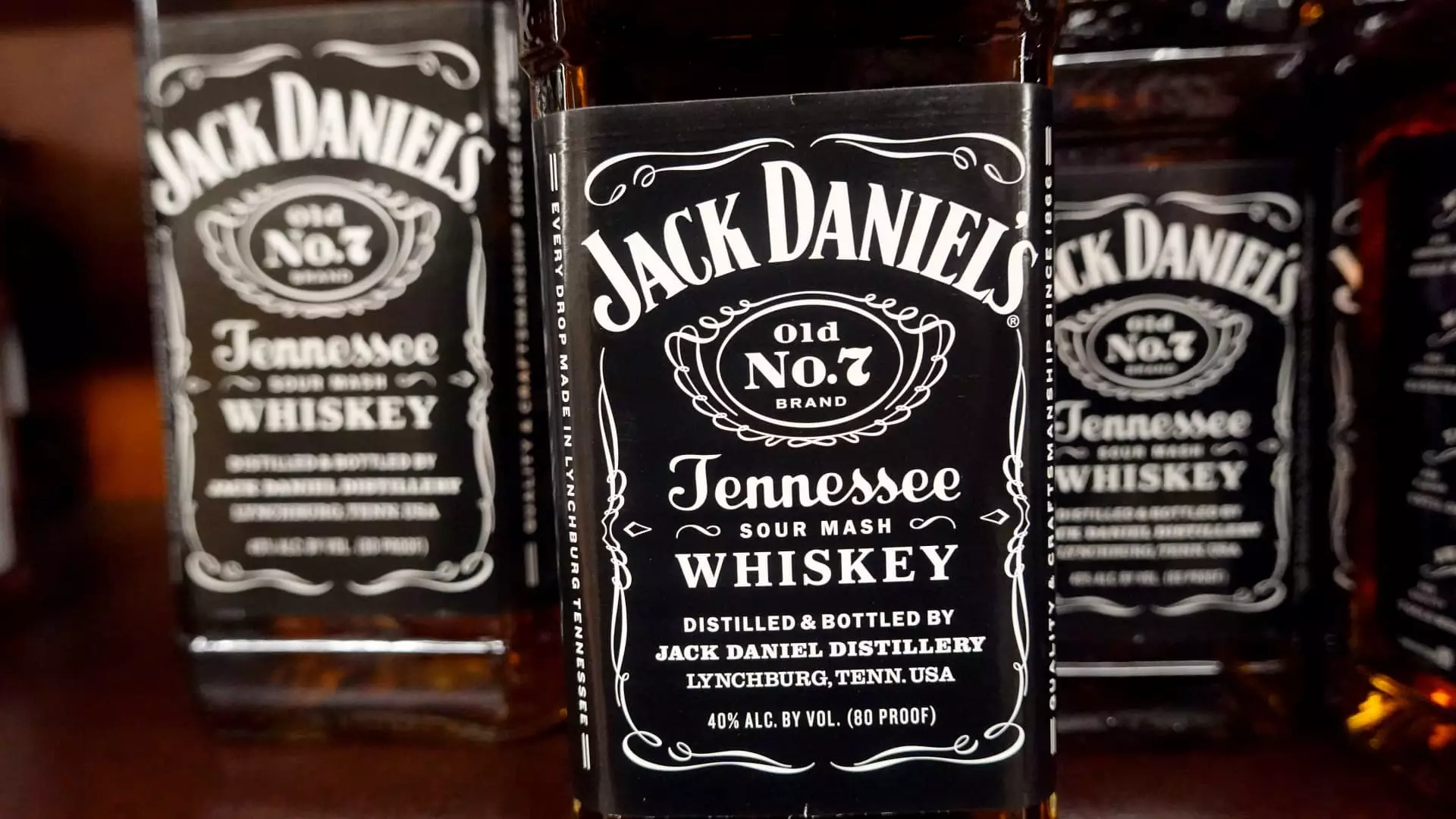The recent nosedive in Brown-Forman’s stock—a staggering 18% drop—speaks volumes about the brewing storm in the spirits industry. With earnings failing to meet Wall Street’s expectations, the company’s struggles highlight a troubling trend that goes beyond mere quarterly figures. While CEO Lawson Whiting acknowledged progress in a challenging macroeconomic environment, the truth is that the company is teetering on the precipice of a severe operational crisis, exacerbated by external pressures like tariffs and wavering consumer spending.
Earnings per share fell to 31 cents, courtesy of a substantial 45% decline in net income when contrasted with last year. Such performance raises eyebrows, especially in a consumer market where spending on discretionary items—including alcohol—is undergoing a significant contraction. The revenue report of $894 million falling short of the $967.4 million estimate serves as a red flag. Invested stakeholders must confront the uncomfortable reality: Brown-Forman is not merely experiencing a setback; it is facing stagnation in a flourishing industry.
Whiskey’s Status Quo: A Fraying Foundation
Amidst the chaos, Brown-Forman’s whiskey products like Jack Daniel’s and Woodford Reserve have retained flat sales, revealing an unsettling reality—what was once a burgeoning segment shows signs of stagnancy. Meanwhile, the company’s ventures into tequila and ready-to-drink cocktails have suffered significant losses of 14% and 6%, respectively. The premonition from Bernstein analysts regarding potential tariff impacts is alarming, signaling that the company may lose a staggering 10% in earnings before interest and taxes should tariffs escalate.
For those who find solace in the spirits industry as a continual growth area, the news is particularly disheartening. When Brown-Forman cannot count on whiskey as a reliable revenue stream, doubts arise about its overall market viability. The company’s vulnerabilities, juxtaposed against stronger competitors like Constellation Brands and Anheuser-Busch, suggest that the time may have come for a re-evaluation of its strategic positioning.
Macroeconomic Headwinds: A Broader Context
The broader economic landscape is rife with challenges, complicating an already troubled situation for Brown-Forman. The uncertainty stemming from geopolitical volatility and swinging tariffs consistently puts pressure on consumer confidence, effectively stymying any anticipation of a swift recovery. Whiting’s admission of “low visibility” for fiscal 2026 raises questions about the realism of the company’s projections of minimal organic sales growth.
As non-branded sales of used barrels plummet, agencies must take this moment as a chance for reflection. The erosion of Jack Daniel’s market position in Canadian stores as a result of tariffs represents a tangible loss that extends beyond finances—it translates into brand reputation. Acknowledging the impact of previous regulatory decisions, it’s evident that these economic factors are manifesting themselves in ways that can undermine even the most resilient brands.
The Path Forward: Suffering or Strategy?
While Brown-Forman asserts that it cannot quantify the tariff impact, this opacity in measuring risk gives rise to even more troubling prospects. The idea that operating headwinds may lead to further dips in growth may leave investors feeling jittery about the lack of clear strategic pivots within the company.
In a time when many are reconsidering their investment strategies, Brown-Forman must confront not only its immediate operational challenges but also its long-term strategic vision. While there is no denying the historic strength of its whiskey offerings, fundamental questions arise about its adaptability and resilience in this unpredictable market climate. The future for Brown-Forman hangs precariously in the balance as it navigates through an evolving landscape defined by economic unpredictability and fluctuating consumer desires.

